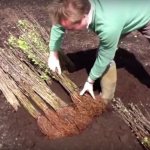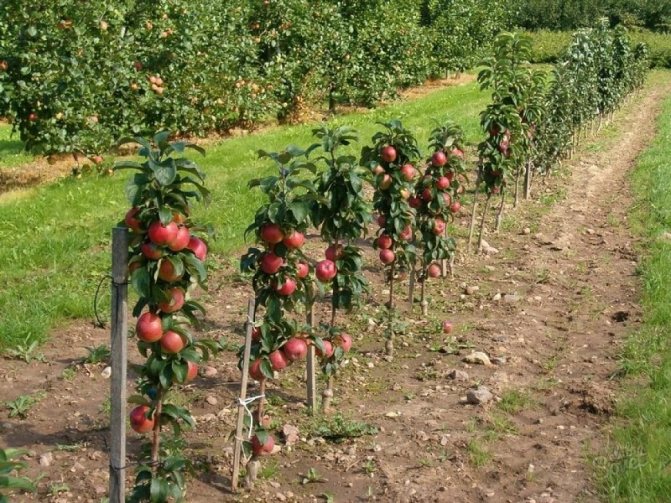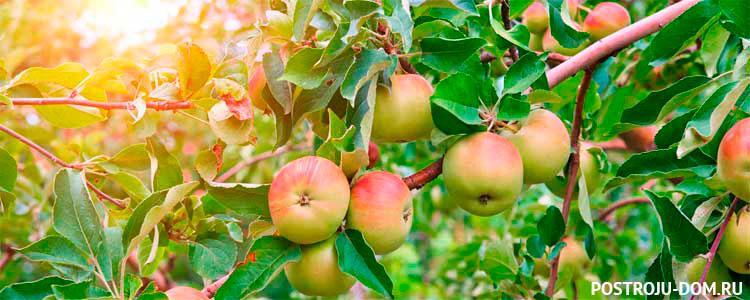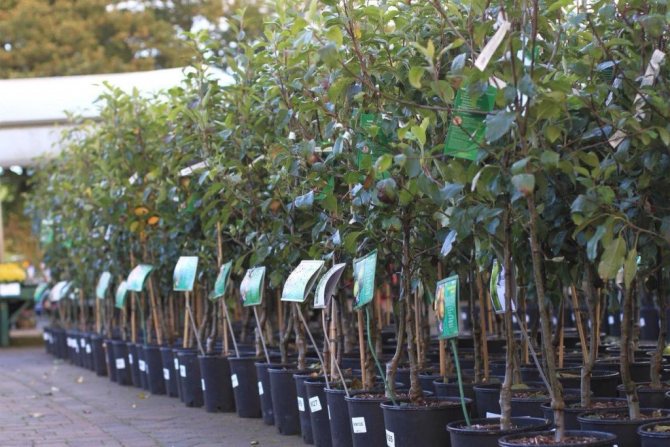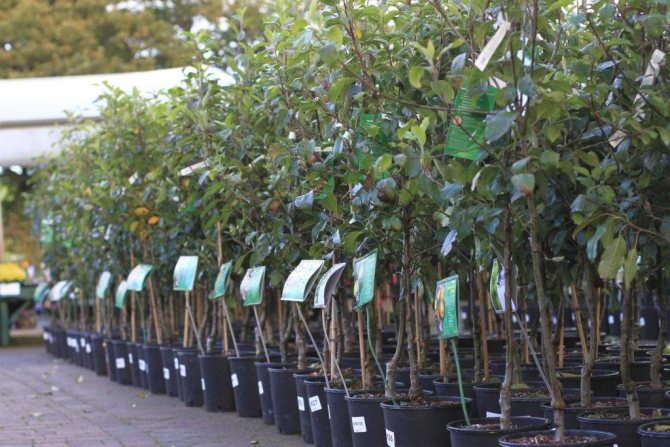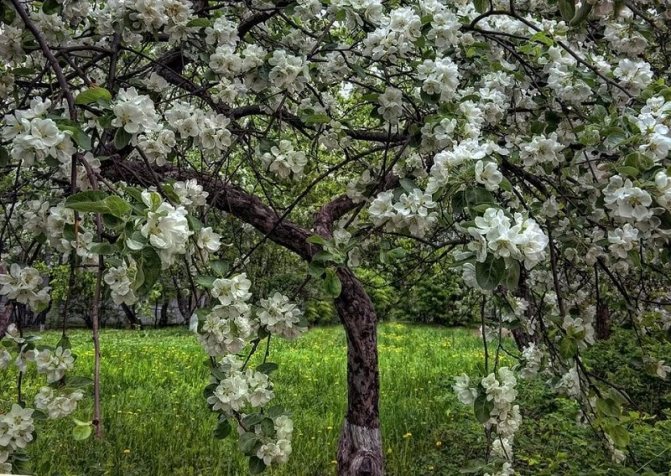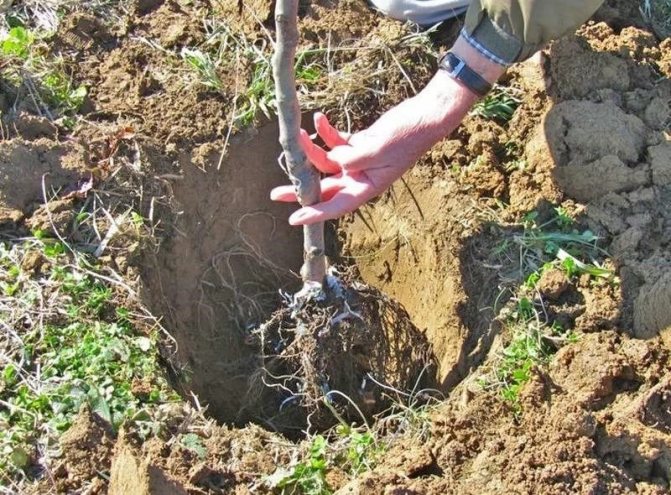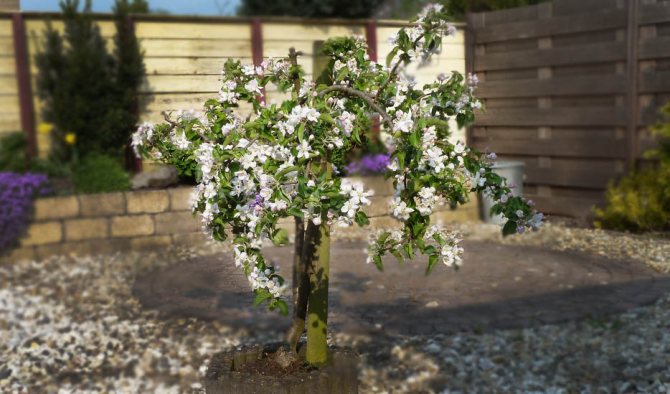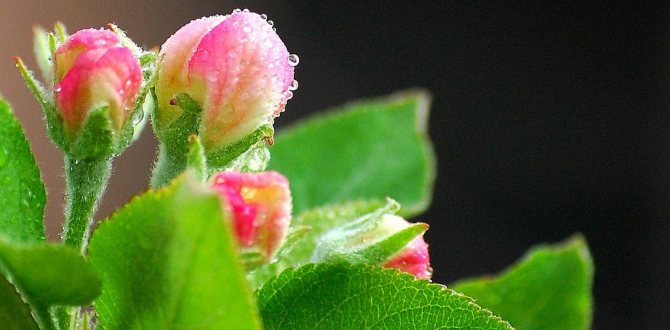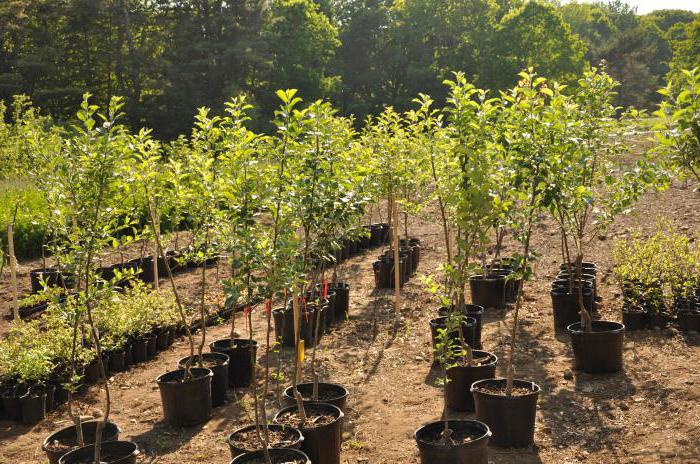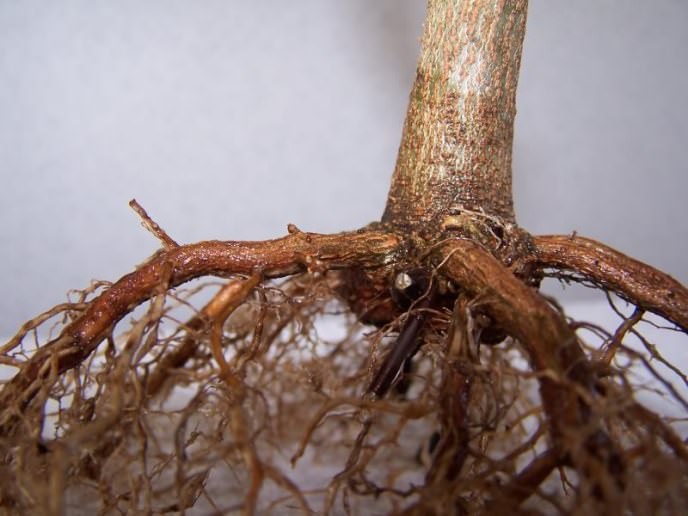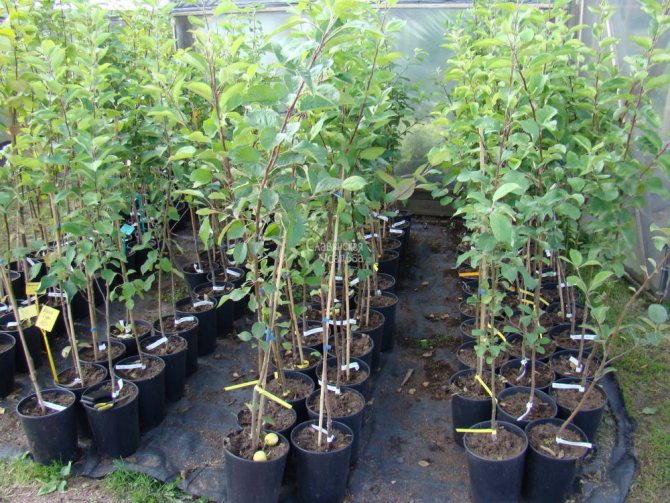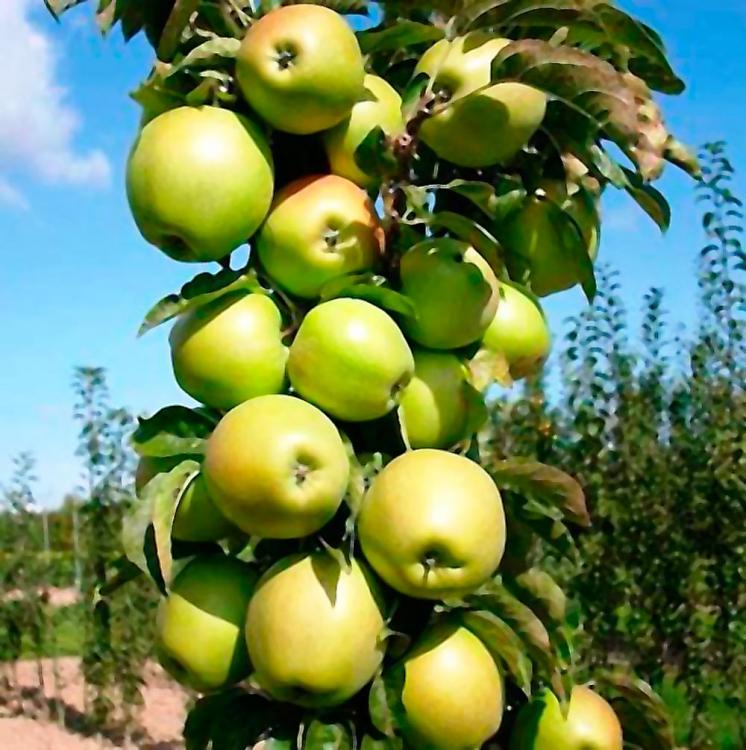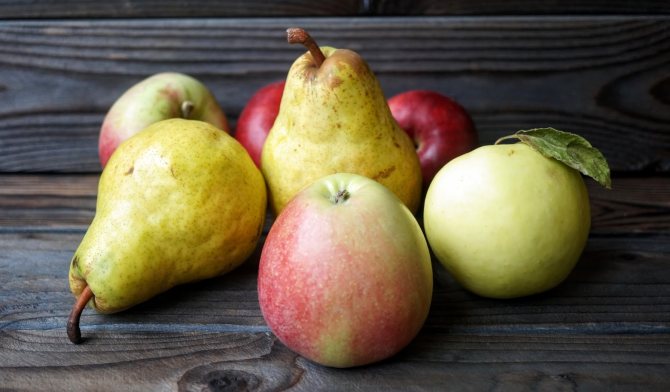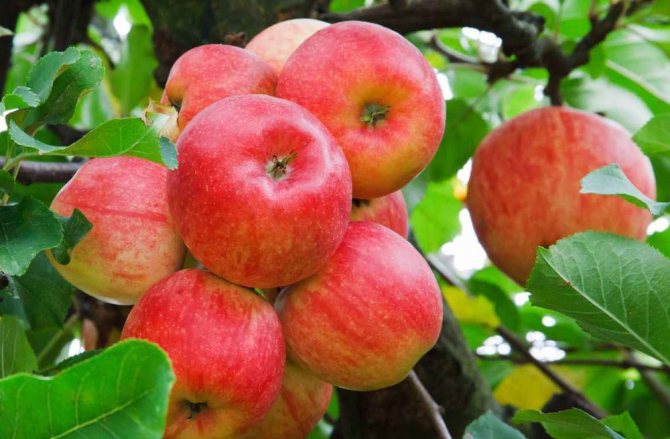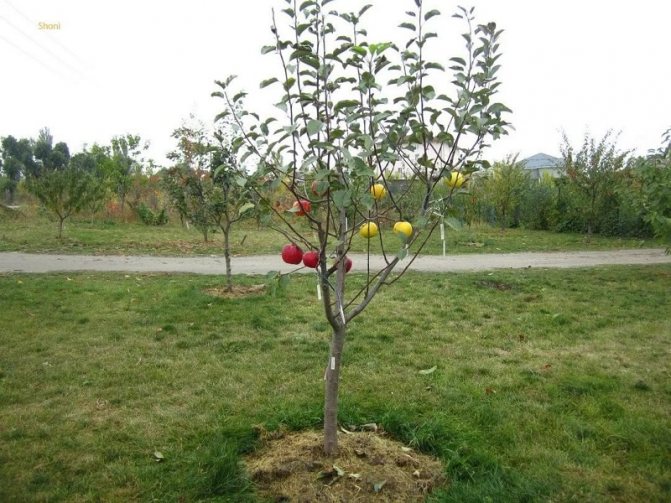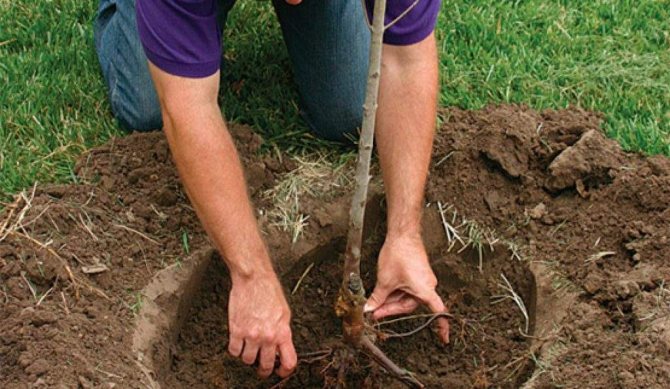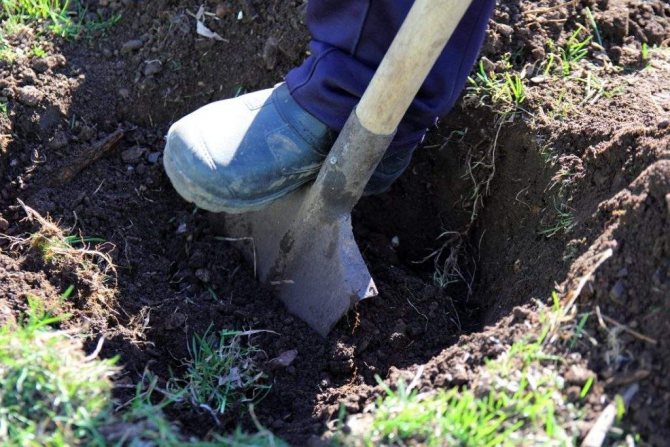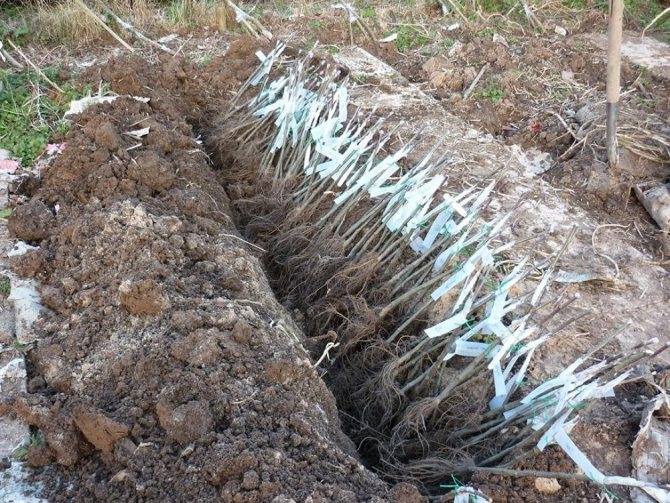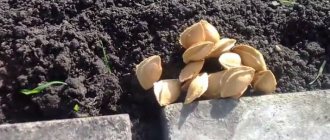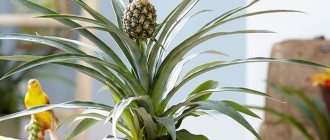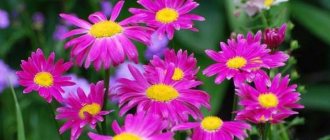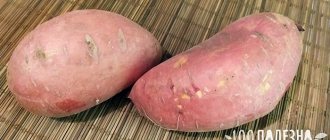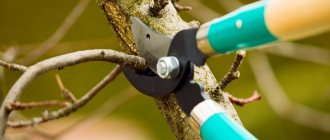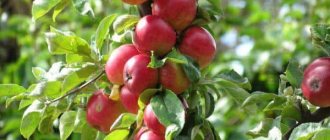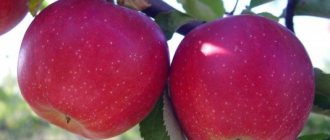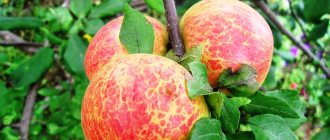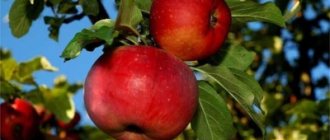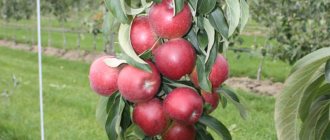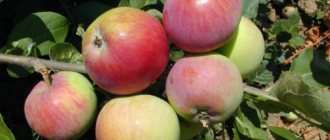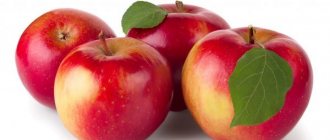Introduction
To calculate the cost of pruning a garden, it is often necessary to determine the age of the pruned fruit trees. There are disagreements with the customer who indicates the wrong age for their plantings. Moreover, without any malicious intent. For example, a person who planted an apple tree 10 years ago considers it to be 10 years old. In fact, she is at least 11 years old, and maybe 13 - 15, because she was planted with a seedling that already had some age at that time. Sometimes the customer finds it difficult to remember the age of his trees. In these cases, the performer can quickly calculate the age of the fruit tree with an accuracy of +/- 1 year. To do this, you can use the three methods below (in reality, in gardening, only the method of calculating annual growth is used).
Rules for the preservation of apple seedlings before planting in spring
As a rule, the richest selection of seedlings is in the fall. After buying them, it is better to plant them immediately, but if this is not possible, you will have to postpone planting until spring, but before that time the planting material must be somehow saved. This can be done in several ways.
Prikop
In this case, the tree must be buried in the soil. To do this, you need to choose a place where the snow cover will not be blown away by the wind. You should not do this in a swampy area, as excess moisture will certainly cause the roots to heat up. And here is the exact instruction for digging in the planting material:
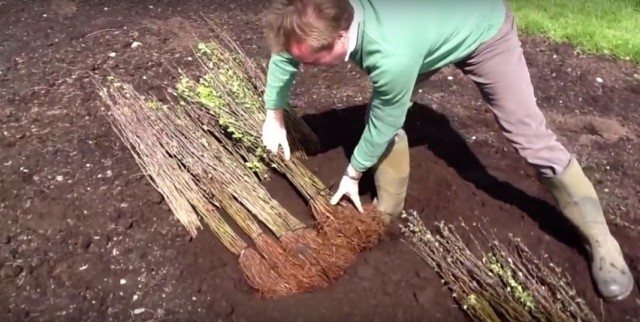
- First of all, you need to dig a hole (groove), the depth of which should not exceed 50 cm. The southern side of this hole should be made in an oblique shape. The soil in the hole should be watered abundantly. Before planting, leaves are cut off from the seedlings and dried branches, if any, are removed. This must be done in order to prevent rotting. If you overlooked when buying, and the trunks of the seedling are covered with specks, they need to be treated with a special agent - Fundazol.
- The planting material is laid on the inclined side and covered with soil for 2 thirds of the length.
- Watering is done again, after which the soil will surely settle, and it will have to be filled up.
- The soil must be properly compacted. This is done so that the cold does not reach the root system. Plants need to be thoroughly insulated, for this they are wrapped with agrofibre. The planting material must be protected from rodents. For this, spruce branches or a plastic net are placed on the pit.
Snowing
With this method, you can guarantee the preservation of seedlings until spring. But according to what rules this procedure should be carried out:


- First of all, the seedlings must be properly packed so that the roots are protected by a clean substrate. For this, you can use sand or sawdust. They are properly poured with boiling water and mixed after the moisture is completely absorbed.
- But too much moisture is also bad, so it is better to drain the excess water.
- When the sawdust is properly steamed and cooled, they need to be scattered around the roots.
- The root system is wrapped in plastic wrap, so it will not dry out.
- After that, the seedlings are covered with a snow cover, 15-20 cm thick.
- A layer of sawdust 10-15 cm thick is poured on top, this will help prevent too active melting of the snow cover.
- In spring, the seedlings must be cleaned of sawdust, and their roots must be immersed in water with a growth stimulator for a while.
Basement storage
If the first two options for storing seedlings do not suit you for some reason, they can be stored simply in a basement or other similar room, where it is never colder than -3 degrees in winter. This is done as follows:
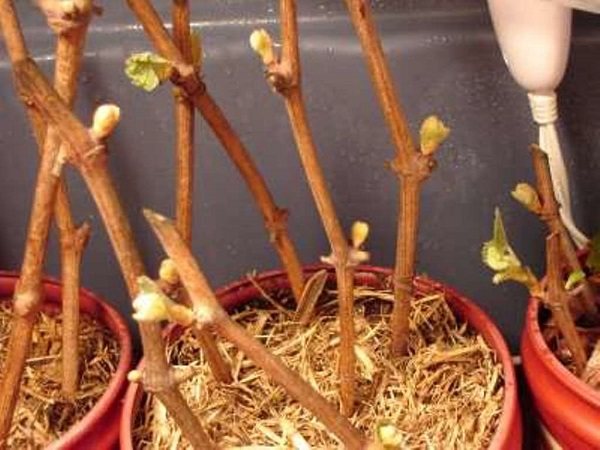

- Sprinkle the roots with slightly damp sawdust. Then they are placed in a plastic bag and tied up. Do not forget about rodents, which may well damage the seedlings. To prevent this, it is necessary to scatter the poison around.
- The room where the seedlings are stored should not be too warm, otherwise the buds may wake up. Therefore, the temperature must be monitored. If it starts to warm up, it's best to keep the windows open.
- Do not forget about seedlings for a long time. Their root system needs to be checked from time to time. If they start to dry out, they should be sprayed with water, and if mold begins to appear, treat them with Fundazol.
If you do not have sufficient experience in choosing seedlings, ask someone from experienced gardeners to help you. And remember that your garden begins with a nursery, where you buy planting material, which, if necessary, still needs to be correctly stored before planting.
Determination of the age of seedlings of fruit trees
A 1-year-old seedling of a fruit tree usually has a height of 0.7 - 1.0 m, a diameter of 10 cm from the root collar of 1.0 - 1.3 cm.The trunk of a seedling aged 1 year does not have lateral branches, as well as traces of their removal - overgrown and overgrown sections. The length of its roots is 25 - 35 cm.
Saplings grown in subtropical conditions (southern Russia), with good nutrition and water supply, can branch out in the first year of life. Their trunk is often thicker than 1.5 cm. It happens that they are sold as seedlings of 2 years old. Such planting material may not be zoned for central Russia, i.e. may just freeze in winter. It is difficult for a non-specialist to identify such seedlings by eye. It is better to buy planting material from trusted suppliers. You can read more about this in the article on choosing seedlings of fruit trees.
2-year-old seedlings are about 1.5 m high and about 2.0 cm in diameter. The trunk of a 2-year-old seedling should have 1-3 lateral branches. The side shoots themselves do not have branching. The length of its roots is 30 - 40 cm.
3-4 year old seedlings have a pronounced central conductor and 4-6 lateral branches, which will become the skeletal branches of the future tree. By counting the number of branches on one of the skeletal branches and adding one to it, we get the exact age of the seedling. The trunk is about 3 cm in diameter. Root system with developed skeletal roots.
Now seedlings with an open root system practically do not sell and it will most likely not be possible to assess the size and condition of the roots.
What to look for when buying seedlings
The appearance of the seedling speaks of its condition, therefore, when choosing a healthy specimen from the nursery, you should pay attention to the following characteristics:
- the most important part of the tree is the roots. If they are lethargic, dry, then the plant was not stored properly, and it is difficult to imagine how it will take root. It is better that the roots are covered, otherwise it is important that they are in a humid environment in the shade;
- the tree should not have any damage, wounds, be straight;
- branches should be located at an acute angle to the trunk;
- on the roots and trunk there should be no swelling, growths, which indicate the presence of any disease in the plant;
- the age of the tree. The younger the plant, the faster it takes root, it is best to buy a 1-2-year-old seedling that does not have side branches or it has 2-3 of them;
- a healthy plant has a bright green trunk under the bark.
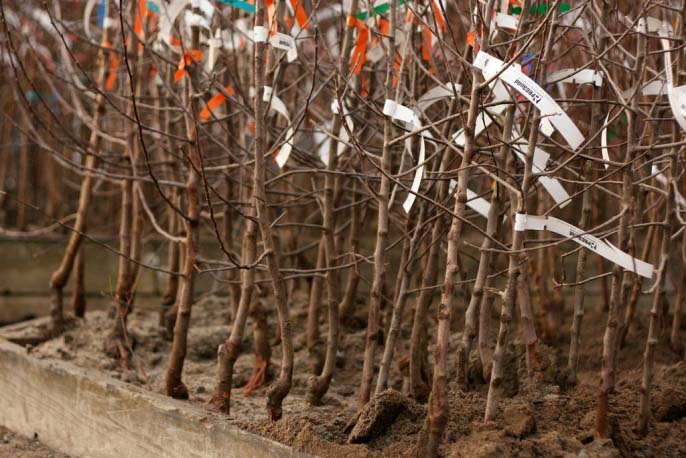

Determining the age of a tree by calculating annual increments
1 - annual influx between 1-year-old and 2-year-old wood 2 - annual influx between 2-year-old and 3-year-old wood 3, 5 - increments of last year (annual shoots) 4 - increment of the year before last (two-year shoot) 6 - three-year shoot
This method is used in horticulture, incl. and us. Less accurate (+/- 1 - 2 years), but harmless to the plant and the fastest. The method of determining the age of a tree by calculating annual growth is suitable for any fruit and some forest tree species. By autumn, an influx in the form of a circular ring forms at the base of the one-year shoot. By counting such rings on the oldest skeletal branch, you can determine the age of the tree. They start counting from the top of the branch, defining the boundary between last year's and the year before last's increments. Then between two- and three-year-old shoots, and so on. At the point of origin of the branch from the trunk, its full age is determined, 2 years are added to it and the age of the entire tree is obtained. It can be difficult to find annual ring beads on branches older than 3 years. In this case, count the number of branches, also formed annually. The difficulty is that the shoot can branch more than 1 time per year. Or the branching shoot may die and disappear. In the first case, you can attribute extra years to the tree, in the second, make a mistake downward. However, the method is accurate enough to distinguish, for example, a 15-year-old apple tree from a 20-year-old one. In some cases, it is possible to establish the age of a tree with an accuracy of up to a year.
Features of spring planting of an apple tree
- After thawing the soil (about 7-10 days before planting), prepare the pit. In good soil, a depth of 60 cm is sufficient, on poor soils - at least 70 cm.The diameter of the hole is kept from 60 to 80 cm.
- Thoroughly moisten the root system of the seedlings by placing them in a barrel of water for a day. Having saturated with moisture, the roots will be protected from drying out.
- Planting a seedling in the ground is carried out according to the "autumn" technology. The only difference is the higher watering rate. It is stopped when the soil ceases to absorb moisture.
- Planting columnar varieties in the ridges, first a strip of 3x3.5 meters is prepared for each plant, digging it to the depth of a bayonet. A mixture of fertilizers is scattered over the surface: a bucket of compost (humus), 2 tablespoons of superphosphate, 2 tablespoons of potassium salt per 1 m2. The earth is covered with a rake, sprinkled with earth without fertilizers (layer 60-70 cm). The apple trees are planted in 2-3 weeks, in parallel grooves are dug in the aisles to drain the groundwater.
Determining the age of a tree using Presler's gimbal
A column of wood as thick as a pencil is drilled with a special gimbal, which is a hollow tube. On it, you can count the growth rings in the same way as on the trunk cut. The method is almost harmless to the tree - the hole is overgrown in the same year. This method is also rarely used. Firstly, not every gardener has the mentioned gimbal; secondly, not every garden owner will allow drilling their apple trees.
Beautiful, fragrant, tasty and juicy apples just picked from the bush - can they leave anyone indifferent? Every gardener should know that enjoying self-grown apples begins with the question "how to choose an apple tree sapling?"
Step-by-step strategy for choosing a seedling
Step 1. We choose apple seedlings, the varieties of which are suitable specifically for your region.
It's no secret that bananas cannot be grown in Norilsk. And not all apple varieties are suitable for planting in all regions of our country. The best option is to choose those that are represented in local nurseries or garden organizations.
According to the ripening period, apple trees are divided into three types:
- Summer - bear fruit in August and are stored for a little more than a week. These apple trees are grown in many regions.The most popular varieties: White filling, Medunitsa, Grushovka.
- Autumn - bear fruit in September, and their shelf life can reach a whole month. Popular varieties: Melba, Koreyanka, Borovinka, Cinnamon striped.
- Winter apple trees - ripen at the very end of September. Their peculiarity lies in long-term storage, up to six months. Best of all, apple seedlings of winter varieties take root where summer is very warm and autumn is not very cold. Popular varieties: Antonovka, Aport, Welsey, Moscow winter, Bogatyr.
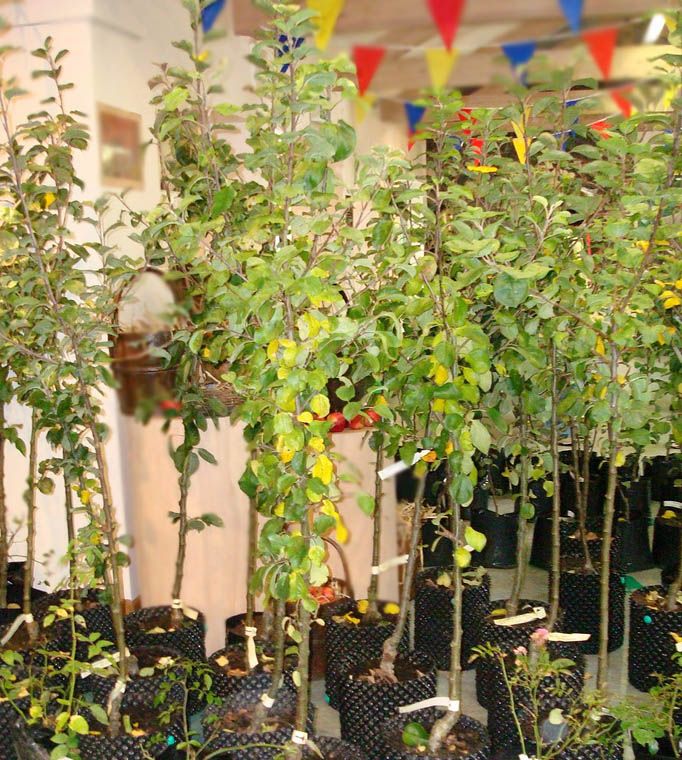

Step 2. Where to buy apple seedlings?
As noted above, it is best to purchase seedlings from the nursery. Also, an apple tree can be purchased in specialized firms, garden organizations, whose addresses are on the Internet. You should pay attention to the reputation of these, in places of point sales you should not buy seedlings.
Step 3. We got to the most important - the practical stage of the choice. And if the question of where to buy apple tree seedlings is quite simple to answer, then at the third stage all your attentiveness, scrupulousness and pickiness will be needed.
How to determine the age of a linden tree
Linden is the tree that will survive many generations of man. Linden is a very beautiful and useful plant. On the territory of the former USSR, in the middle lane and in the northern regions, this plant can be found in almost every deciduous forest.
Linden lives from four hundred to a thousand years.
Linden is one of the longest-lived trees, not only as one tree, but also as a whole species. After all, linden forests stretched across the vastness of Russia 60 million years ago. Fragments of these linden forests are scattered throughout the country, they are also found in Siberia, in the Kemerovo region. Trees grow there, whose age is estimated at 170-200 years, and 300 years old trees are considered to be old-timers. But this age is far from the limit for linden. In more favorable natural conditions - for example, in the European part, linden lives from 300 to 500 years. They say that linden can live for a thousand years, but I have not heard of such cases. Linden blooms very beautifully, the most delicious honey is collected from it, there are many young shoots in the linden forest, so if you wish, you can easily plant these beautiful trees.
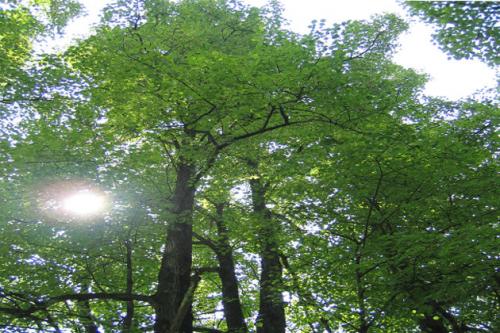

Most scientists agree that the linden tree is 400 years old. But it all depends on the habitat of this honey tree. Sometimes it can dry out even after 30 years, and as some Soviet experts wrote - in the USSR, the linden calmly lived up to 600 years, and in some cases its life expectancy was twice as long.
Linden is a long-lived tree.
But before talking about how many years the linden has lived, it is important to note that this tree is especially remarkable, because there is a benefit from it not only in industry, but also in medicine, both in official and folk: for example, When I catch a cold, I take tea from linden flowers, they have a lot of vitamin C + tea from linden flowers knocks down the temperature! It is sold in a pharmacy, in filter bags. Still, it is better to drink such a healthy tea than to swallow the chemistry, which is a paracetamol pill.
Linden is also famous for being an excellent honey plant!
Linden grows up to four hundred years, and it lives even more: up to 1200 years!
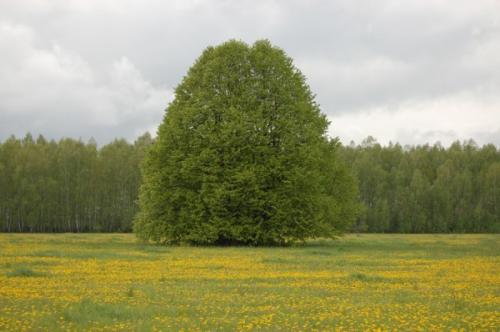

I love the scent of linden, I can't walk away from the flowering tree on the street for a long time. I would walk along Tsvetnoy Boulevard in Moscow at the end of May every day if I lived in this city.
Wood types are very durable. Their age can reach 600 years. But on average, they live from 200 to 300 years.
Any tree that lives / grows in a clean and far from pollution environment lives longer than the tree that grows in the city because all trees absorb bad fumes from cars and factories, in the city linden lives for 300-400 years, and in nature up to 1000 years ...
Linden, in comparison with birch or mountain ash, lives 3 times longer - 400 years or more (the oldest tree that was officially noted was 1000 years old) and this is very pleasing to beekeepers, whose apiaries are usually located closer to linden plantations.
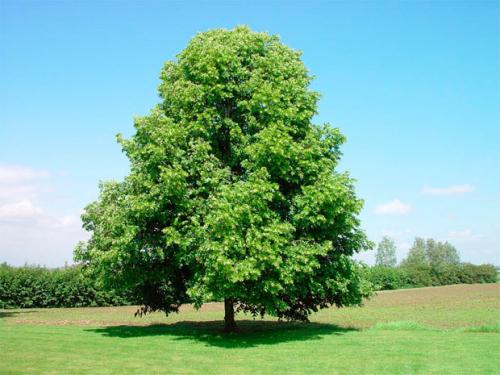

And so the linden is blooming.
The broad-leaved linden tree is especially durable, surviving up to 600 years (some specimens even up to 1000). Linden is one of the main and widespread trees in the growth capacity is preserved until old age. It is durable, lives up to 400 years or more.
Linden is considered a long-liver and can live up to 1200 years. Only I doubt that any of the contemporaries saw such a tree. Linden trees grow near my house and my mother tells them to be 60 years old. The grandfather was engaged in apiary and planted in the district.
What are the seedlings
Seedlings are grown in two ways: by winter grafting and by budding
.
Both are on sale. With winter grafting, there are seedlings with a closed root system, and with budding - only with an open root system.


Budding, or peephole grafting
- a method of grafting fruit and ornamental plants with a single bud taken from a cuttings of a cultivar. The established bud starts to grow in the spring of next year, a tree or bush is formed from this shoot, which is transplanted to a permanent place.
When winter vaccination
the shoot of a cultivated plant is grafted onto the stem or the bark system of another, often uncultivated plant.
The secret of growing seedlings is that seedlings with winter grafting grow 1 year faster than seedlings with budding.
When buying a seedling with budding, it is usually at least two years old.
Preparing the landing site
Sometimes it is mistakenly believed that an unpretentious apple tree can grow where it is necessary. But this culture has certain preferences:
- an abundance of sun in the summer;
- fertilized soil;
- lack of boggy;
- protection from strong winds and, at the same time, sufficient ventilation of the site.
If there is no place on the personal plot with such a combination of conditions, they must be created. A high fence will help to shelter the trees from the wind, to enrich the soil - organic fertilizers or green manures, to prevent root rotting from groundwater - drainage. It is undesirable to place young growth where apple trees used to grow. From year to year, plants secrete specific substances that remain in the soil and inhibit the growth of seedlings of the same breed. Plum and cherry are good predecessors for apple trees. On a vacant lot, a corner where nettles thrived will become a suitable place for a seedling.
Before planting, find out whether the selected variety is self-pollinated. If this is not the case, you should take care of the pollinators: set up a garden near the apiary or plant certain varieties of apple trees nearby (they can be found according to the table). In the middle lane, Antonovka is an almost universal pollinator.
Choosing a seedling for planting
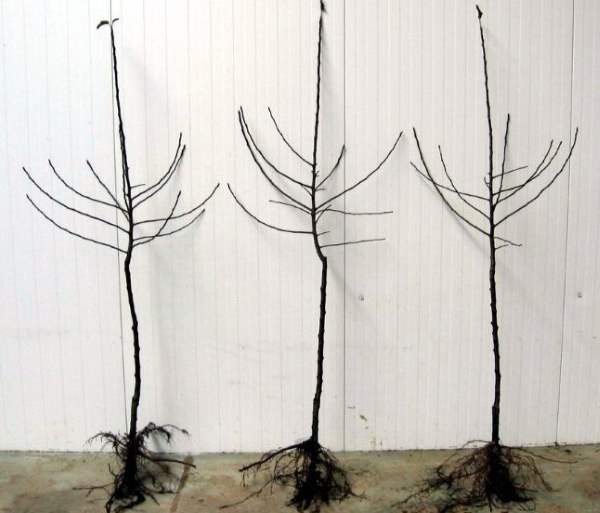

Before choosing a seedling for your site, you need to be guided by the following principles:
Look in what way the seedling was propagated, on which rootstock
What is the thickness of the bole. Using a vernier caliper, measure the thickness of the bole 5 cm above the inoculation. Vigorous - 1-1.2 cm, medium-sized - 1-1.1 cm, weak - 0.9-1 cm.
Nuances and basic mistakes when planting apple trees
As already mentioned, an important point is the correct burial of the seedling into the hole. If the root collar (the border of the trunk and the root) is deep in the ground, the tree will be stunted. With a shallow planting, the roots dry out, because of which the plant may even die. To correctly determine the position of the root collar, wipe the lower part of the main shoot with a wet rag and visually determine the line where the color of the bark changes from green to brown. Do not confuse the root collar with the grafting site, which is 4-8 cm higher.
A number of useful tips will help novice gardeners when planting apple trees:
- Do not exceed the dose of mineral fertilizers. Their excess leads to the death of beneficial bacteria that process useful substances for their better absorption by plants.
- It is unacceptable to lay fresh manure in the planting pit. Deep in the pit, organic matter, without oxygen, decomposes very slowly with the release of ammonia and hydrogen sulfide. These compounds inhibit the roots of the seedling, slow down the survival rate.
- Before planting, the damaged tips of the roots are cut off from the seedling, and if they are dry, the tree is placed in water for 1-2 days. To improve contact with the soil, the root system is dipped in a liquid aqueous mixture of red clay (3 parts) and mullein (1 part). It is advisable to add an rooting agent to this composition - Grandis, Rival, Epin.
- When lowering the seedling into the hole, all root processes should be directed downward or horizontally.
- After sprinkling the roots with earth, it is gently crushed with a shovel or hands. You should not trample the hole with your feet or use a rammer.
- Tying a tree to a peg, twine the twine in the form of a figure eight so that the trunk sways less during the wind and does not split at the same time. Under the twine, a lining made of roofing material is put on the stem, so that the bark is not damaged due to friction.
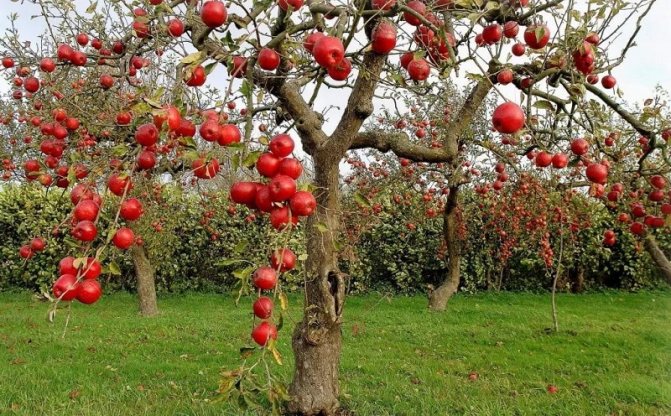

Apple tree care
It is not difficult to take care of the seedling in the early years: you need to remove weeds and periodically moisten the soil. There are different opinions about the state of the near-trunk circles. They can be kept under black steam and loosened constantly to avoid cracking the soil. The second option is mulching with dry grass or straw. Row spacings are sown with green manure in summer, mowed in autumn and embedded in the soil as organic matter.
After the autumn planting, watering the tree is carried out once, since the water evaporates slowly in the cold season. An apple tree planted in spring is watered 2-3 times a week until it takes root. After that, on clay soils, watering is reduced to once a month, and during a drought on sandy soils, it is carried out at least once a week. The watering rate is 2-3 buckets per plant, the water must be settled and warm.
Shelter of spruce branches, strips of paper, mulching with manure or hilling for the winter is carried out for the first five years after planting, until the trees get stronger. Crown formation begins in the second year, in early spring. The branches growing in the area of the trunk are cut off, the strongly growing shoots (more than half a meter long) are shortened - this technique helps to restrain the growth of trees in height and to activate the development of side branches. For the first two years, all flowers are cut off on young apple trees, and then they regulate the load, leaving 1-2 apples in the fruit bunches.
How to choose an apple tree seedling?
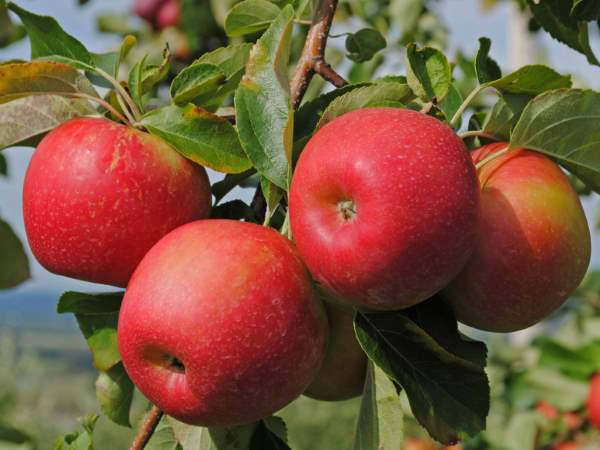

According to the ripening period, apple trees are divided into the following types:
Summer
- fruiting occurs in August, stored for a short time, about 10 days. These are such varieties - White filling, Grushovka, Medunitsa.
Autumn
- ripen in September, stored for a month. These are such varieties as Koreyanka, Melba, Borovinka.
Winter
- fruiting in late September, early October. Such varieties are capable of being stored for a long time, up to 6 months. Such varieties of apple trees are popular - Welsey, Antonovka, Bogatyr, Moscow winter.
Depending on the rootstock, apple seedlings can be divided into three types:
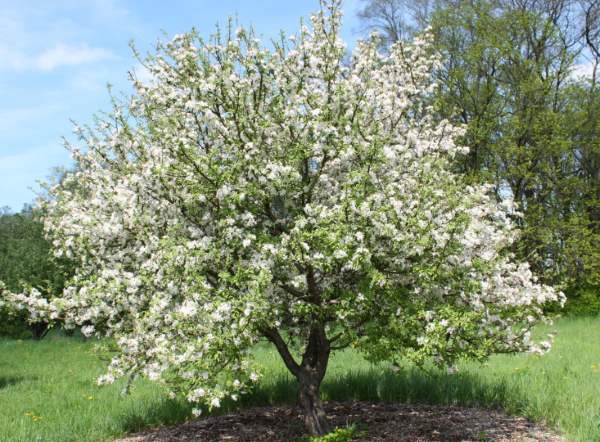

Vigorous
- tree height from 4 to 8 meters with deep roots. Plots for such apple trees should be with a groundwater level below 3 m.
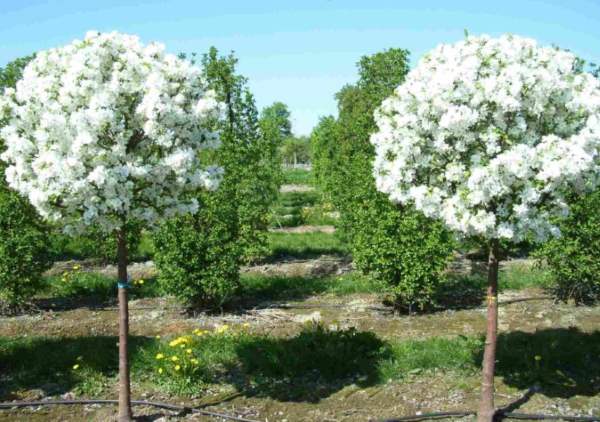

Semi-dwarf
- the height of trees is up to 5 meters with a root system of 2-2.5 m. The groundwater level should be at a distance of 2.5 m from the surface.
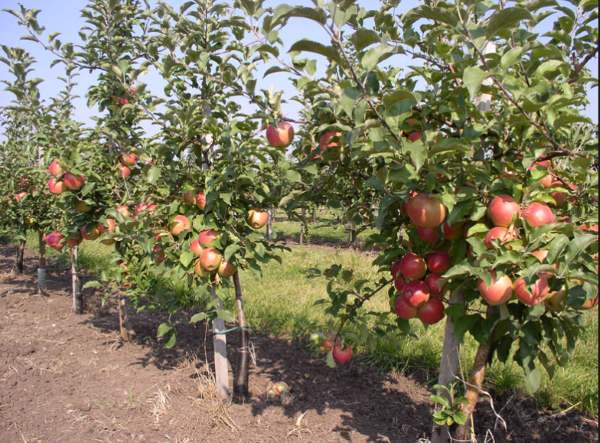

Dwarf
- with tree heights up to 2.5 meters. Such seedlings are planted if the groundwater level in the area is above 1.5 m.
Attention:
The contact of apple roots with groundwater weakens the tree, impairs fruiting and increases the risk of disease.
When choosing a variety, pay attention to the taste of the fruit. Apple trees may be self-pollinating or may require a pollinator.
The younger the seedling, the better it will take root. Annual seedling
does not have developed branches, takes root well, lends itself better to crown formation, but begins to bear fruit later.
Biennial seedling
already has 2-3 additional branches, they take root well, but it is more difficult to form a crown.
Three-year seedlings
, this is an already formed tree, they take root worse.
Pay attention to the stem and roots of the plant when choosing - there should be no growths and damage. Under the bark is the stalk bright green
... The roots should not be rotten and brittle.
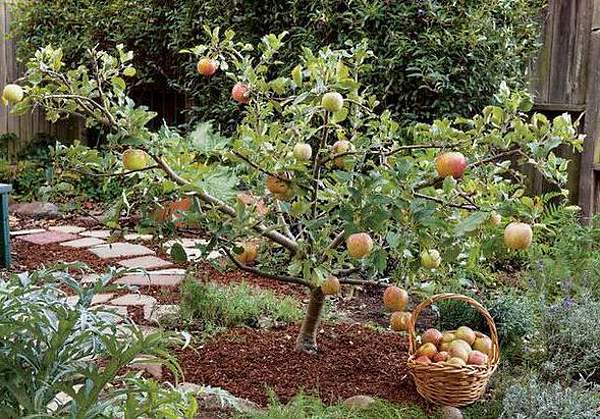

Strong branched roots with a small amount of fibrous roots - this means the plant is grown from seed. Of seed stock
a tall tree will grow, which will bear fruit for 30 years or more, but you will receive the first harvest in 5-7 years. Such trees are well adaptable, disease resistant and unpretentious in care.
Clonal rootstock
has a fibrous root system. A bountiful harvest from such rootstocks is obtained in a short time.
How to determine the age of a nut. Description
The tree belongs to the family of walnut plants. In an adult state, it is large (up to 30 m in height), a spreading crown, a thick trunk (up to 5 m in diameter), large fruits. The homeland is the territory of Central Asia. Life expectancy reaches 400 years. There are known specimens that have lived for 2000 years. Begins to bear fruit after 10 years of rapid development. The maximum harvest ripens in 20 years. The number of nuts increases with age.
The lush crown has large, pinnate leaves. The root system of the walnut is powerful, branched. You cannot grow a plant with legendary flowers near the foundations of any buildings without damaging them.
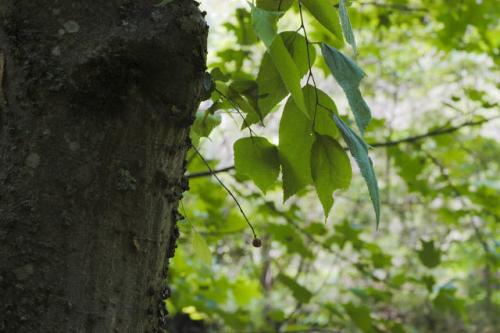

Edible fruit refers to false drupes, covered with a green outer shell and an inner shell (also very useful). One core consists of four lobules, separated by thin, strong partitions that have healing properties.
Flowering occurs in late spring, early summer. It blooms in small flowers collected in a brush. Male and female flowers are formed on them, creating the necessary conditions for growth for self-pollination. Having planted several specimens next to each other, cross-pollination is easier.
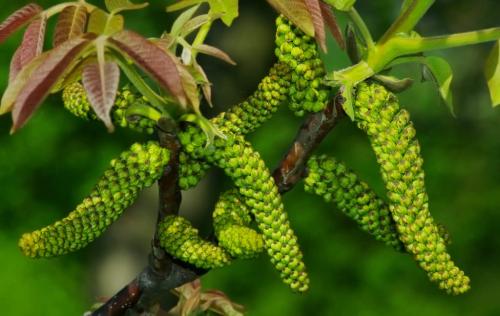

A good bark of the standard part in the highest degree of maturity has a light, grayish tint. Fruiting shoots, skeletal branches are colored brown. Young branches are green. Small flowers, white in color, are collected in beautiful brushes. Often on trees, after a few months, the time of the second wave of flowering is observed, new buds are formed at the end of the branch, making it possible to get another harvest. Trees bloom again. The ripening process ends by the end of autumn.
Old varieties of apple trees. Old varieties of apple trees in the gardens of Valaam
These studies were carried out by employees of the V. IV Michurin of the Michurin State Agrarian University, and above all by Professor NS Samigullina and Associate Professor KV Kondrashova in the process of many years (since 1985) restoration of the monastery gardens of the Valaam archipelago.
It seems to me a miracle to identify old apple varieties, some of which have already left our gardens and have even been forgotten, and besides, in unusual conditions of their growth (on rocks, almost in the Arctic), where many of them have changed noticeably. And this miracle was accomplished thanks to the extraordinary persistence, professionalism and some, I would say, "mysterious instinct" of experts.
I remember how in the first years of the work of N.S.Samigullin and V.K. the definition of varieties. Alas, no one even from the eminent could really say anything, I confess that I was among them.
And now, more than 20 years later, a catalog of retro varieties of the Valaam archipelago appeared. And this is very important. Firstly, now we know for sure which apple varieties grew for a long time in the harsh conditions of Valaam, a description of these retro varieties is given and it is shown that in some of them, under the influence of unusual growing conditions, the fruits have noticeably (sometimes even beyond recognition) changed, trees, the rhythm of development.
Low bow to you, great ascetics of Russian gardening, for your selfless work to revive the gardens of Valaam, restore the "thread of times" in their development and transfer to us the unique experience of the great gardeners of the Valaam Monastery.
And who knows if, after getting acquainted with this material, some of the experienced gardeners will have a desire to start a multi-sorts apple tree in their garden, which is a tree-garden of the Valaam Monastery. Appeared ?! Good luck then.
Apple tree life cycles
The life span of an ordinary apple tree can be conditionally divided into 3 different cycles. Each of them is a continuation of the previous one and characterizes the main age-related changes in the tree.
First cycle
This is the development of the seedling and the beginning of the fruiting period. For apple trees, this age is from 5 to 15 years.
It is characterized by intensive growth, the laying of the main skeletal branches. At this time, it is very important to correctly form the future fruit tree. If this is not done, yields will be low and life expectancy will be significantly reduced.
Second cycle
This is a period of intense fruiting and a gradual decline in growth rates. It lasts from 15 to 40-50 years.
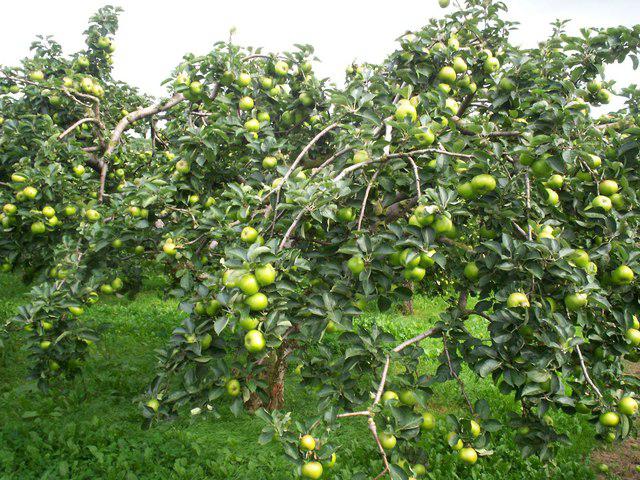

But these indicators are rather arbitrary and largely depend on the variety, growing conditions, care and a number of other factors.
During this period, the apple trees left without proper care have a very deplorable appearance. Their crown thickens very strongly, and the side branches are strongly intertwined. Also, on the bases of the skeletal branches, long vertical shoots or, among the common people, “tops” grow, and there is practically no growth at the ends of the branches.
Fruiting in such trees is very weak, and the fruits are small and deformed. In places where branches are broken, various lichens and mosses often settle on them, which only aggravate the picture. Under the crown of trees brought to such a state, a large amount of root growth often appears. It may seem to an inexperienced gardener that such an apple tree has run wild or degenerated.
After purchasing a country house, I got just such an orchard. Its owner, an elderly woman, did not take proper care of the apple trees for many years. After carrying out sanitary and formative pruning, the apple trees resumed their fruiting in the third year.
Third cycle
This is the last stage in the development of the apple tree. It is characterized by an almost complete absence of growth processes and the gradual withering away of skeletal and shoot-forming branches. Fruiting during this period is already absent or very rare. From an economic point of view, it is not profitable to bring the garden to such a state. Such apple trees need to prepare a future replacement in advance.
Seedling care
Pruning dry branches and systematized timely watering are the ingredients for successful apple cultivation and frost resistance of the tree.
It is enough to water the seedlings of the first year 3-4 times in the summer, pouring up to 4 buckets of water over their root, provided there is no drought.
You may be interested in our publications:
- How to properly grow an apple tree from a seed or a branch at home?
- When to collect apples for storage? And how to do it correctly.
- 5 ways to freeze apples at home.
Constantly loosen the soil under the bush and prevent weeds from growing.
If flowers appear in the second year, they are usually removed.since it is a barren flower. After the first harvest of fruits, rivet the branches, removing the dry ones.
Until the middle of summer it is important to do at least five nitrogen feedings, based on mineral and biological fertilizers.
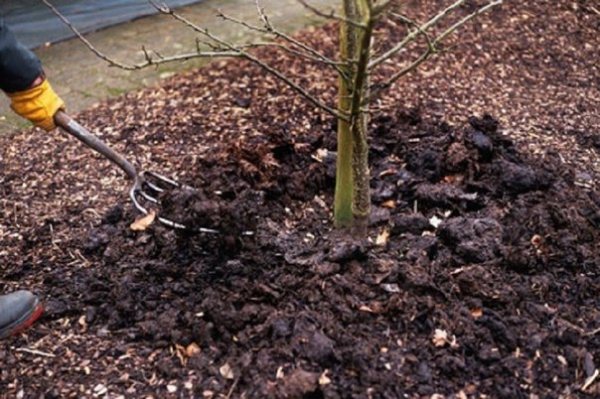

The planted apple tree needs watering, feeding and cutting off the primrose

